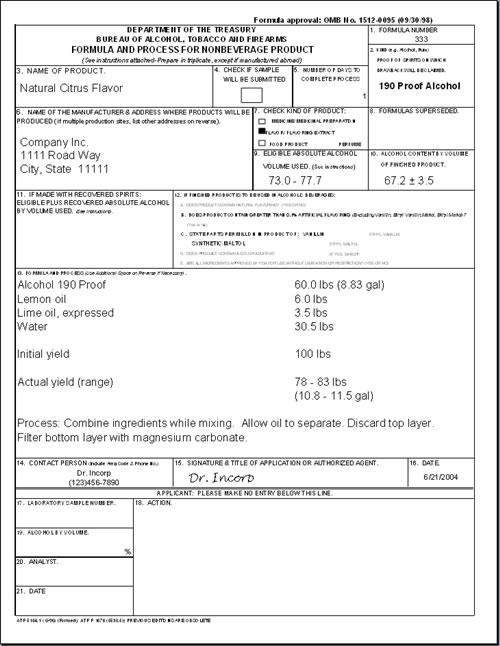Back to Nonbeverage Products Laboratory page
Example formulas
Simple extract
Calculating items 9 and 10 for an extract is more complex than the previous examples.
Step 2. Item 10 calculation - For this, a determination of the concentration of the ethanol in the starting menstruum must be made (ethanol and water along with other dissolved components (not the oil!)).
Ethanol = | 60.0 pounds ÷ 6.7943 pounds/gallon = | 8.83 gallons |
Water = | 30.5 pounds ÷ 8.3282 pounds/gallon = | 3.66 gallons |
| Sum = | ______________ 12.49 gallons |
This is the volume of the starting menstruum and is used in the following equation to calculate item 10
Item 10 = (gallons of absolute ethanol) ÷ (volume (in gallons) of starting menstruum)
8.39 gallons of absolute ethanol ÷ 12.49 gallons = 0.672 or 67.2%
For extracts, the tolerance used for filtered products is applied to item 10 (see the tolerance table).
Why use the starting menstruum?
The oil does not add significant volume to the final product because it will not dissolve to an appreciable extent in the water: ethanol mixture. Once the oil is removed, the ethanol content will be determined by the proportions of the soluble ingredients (in this case, the water and ethanol).
Click here to find worksheets to help you calculate items 9 and 10.


